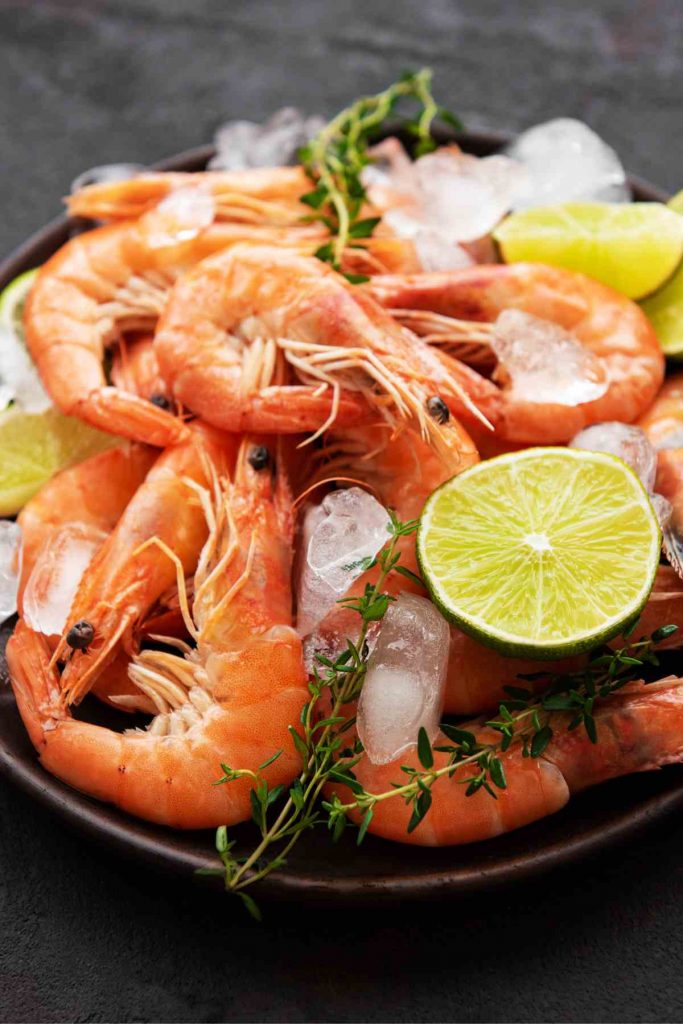Shrimp is one of the most beloved seafood delicacies worldwide, but cooking it to perfection requires precision. One of the key factors in achieving the ideal texture and flavor is understanding the internal temperature of shrimp. Whether you're a home cook or a professional chef, mastering this concept can significantly enhance your cooking experience. In this article, we will delve deep into the science behind shrimp cooking and provide actionable insights to ensure perfectly cooked shrimp every time.
Shrimp is not only delicious but also incredibly versatile. From grilling and frying to boiling and steaming, shrimp adapts well to various cooking methods. However, overcooking shrimp is a common mistake that can ruin its delicate flavor and texture. By monitoring the internal temperature, you can avoid this pitfall and serve shrimp that is tender, juicy, and bursting with flavor.
In this article, we will explore the ideal internal temperature for shrimp, the tools you need to measure it, and practical tips to ensure consistent results. Whether you're preparing shrimp for a casual family dinner or a formal gathering, this guide will equip you with the knowledge to elevate your culinary skills.
Read also:Cotton Candy Themed Party How To Create A Magical And Memorable Celebration
Table of Contents
- Introduction to Shrimp Cooking
- Ideal Internal Temperature of Shrimp
- Tools for Measuring Shrimp Temperature
- Cooking Methods and Temperature Control
- Health Benefits of Properly Cooked Shrimp
- Common Mistakes to Avoid
- Tips for Perfectly Cooked Shrimp
- Delicious Shrimp Recipes
- Food Safety Considerations
- Conclusion
Introduction to Shrimp Cooking
Shrimp is a culinary favorite for many reasons. Its mild flavor and tender texture make it a versatile ingredient that pairs well with a variety of dishes. However, cooking shrimp correctly requires attention to detail, especially when it comes to temperature. Understanding the internal temp of shrimp is crucial to ensuring it is both safe to eat and delicious.
Why Temperature Matters
Temperature plays a vital role in cooking shrimp. Overcooking can lead to a rubbery texture, while undercooking poses health risks. By monitoring the internal temperature, you can achieve the perfect balance of safety and flavor.
The Science Behind Shrimp Cooking
When shrimp is cooked, its proteins denature and coagulate, giving it its characteristic texture and flavor. The ideal internal temp of shrimp ensures that these proteins are cooked evenly without overprocessing.
Ideal Internal Temperature of Shrimp
The ideal internal temperature for shrimp is 120°F (49°C). At this temperature, the shrimp is fully cooked, safe to eat, and retains its delicate texture. Achieving this temperature ensures that the shrimp is neither overcooked nor undercooked.
Factors Affecting Cooking Temperature
- Size of the shrimp: Larger shrimp may require slightly higher temperatures or longer cooking times.
- Cooking method: Different methods, such as grilling or boiling, may affect the internal temp of shrimp.
- Starting temperature: Whether the shrimp is frozen or fresh can influence cooking time and temperature.
Tools for Measuring Shrimp Temperature
Having the right tools is essential for accurately measuring the internal temp of shrimp. A digital meat thermometer is the most reliable option, providing precise readings that ensure your shrimp is cooked to perfection.
Types of Thermometers
- Digital instant-read thermometer
- Thermocouple thermometer
- Probe thermometer
Each type has its advantages, but digital thermometers are generally preferred for their accuracy and ease of use.
Read also:What Challenges Did Mary Jackson Face Overcoming Barriers In The Pursuit Of Equality
Cooking Methods and Temperature Control
There are several methods for cooking shrimp, each with its own temperature considerations. Below, we explore the most popular methods and how to control the internal temp of shrimp during the cooking process.
Grilling Shrimp
Grilling shrimp is a popular method that imparts a smoky flavor. To ensure the internal temperature reaches 120°F, grill the shrimp over medium-high heat for 2-3 minutes per side.
Boiling Shrimp
Boiling is another common method. Bring a pot of water to a boil, add the shrimp, and cook until the internal temperature reaches 120°F, typically in 3-5 minutes.
Health Benefits of Properly Cooked Shrimp
Shrimp is not only delicious but also packed with nutrients. Properly cooked shrimp is a rich source of protein, omega-3 fatty acids, and essential vitamins and minerals. By ensuring the internal temp of shrimp is correct, you can enjoy its health benefits without compromising safety.
Nutritional Content
Shrimp is low in fat and calories, making it an excellent choice for those looking to maintain a healthy diet. It is also rich in selenium, vitamin B12, and phosphorus, which are essential for overall health.
Common Mistakes to Avoid
Even experienced cooks can make mistakes when cooking shrimp. Below are some common errors and how to avoid them:
- Overcooking: This leads to a rubbery texture. Always check the internal temp of shrimp to prevent overcooking.
- Undercooking: This poses health risks. Ensure the shrimp reaches 120°F internally.
- Using frozen shrimp without thawing: Thawing shrimp before cooking ensures even cooking and better texture.
Tips for Perfectly Cooked Shrimp
Here are some practical tips to help you achieve perfectly cooked shrimp every time:
- Use fresh, high-quality shrimp whenever possible.
- Season the shrimp lightly to enhance its natural flavor.
- Monitor the internal temperature closely to avoid overcooking.
Seasoning Ideas
Experiment with different herbs and spices to add flavor to your shrimp dishes. Popular options include garlic, lemon, paprika, and chili flakes.
Delicious Shrimp Recipes
Here are a few recipes that highlight the importance of the internal temp of shrimp:
Grilled Lemon Garlic Shrimp
This recipe combines the smoky flavor of grilled shrimp with the zesty kick of lemon and garlic. Ensure the shrimp reaches 120°F for optimal results.
Shrimp Scampi
A classic Italian dish that features shrimp cooked in a garlic and butter sauce. Monitor the internal temp to ensure the shrimp is tender and flavorful.
Food Safety Considerations
Food safety is paramount when cooking shrimp. Always ensure the internal temp of shrimp reaches 120°F to eliminate any harmful bacteria. Additionally, store shrimp properly in the refrigerator or freezer to maintain freshness.
Handling Raw Shrimp
Wash your hands thoroughly after handling raw shrimp to prevent cross-contamination. Use separate cutting boards for raw and cooked shrimp to ensure safety.
Conclusion
Understanding the internal temperature of shrimp is essential for achieving perfectly cooked shrimp every time. By following the guidelines outlined in this article, you can enhance your cooking skills and serve shrimp that is both safe and delicious. Remember to use the right tools, monitor temperature closely, and experiment with different recipes to keep your meals exciting.
We invite you to share your experiences and tips in the comments below. Additionally, feel free to explore other articles on our site for more culinary insights. Happy cooking!

